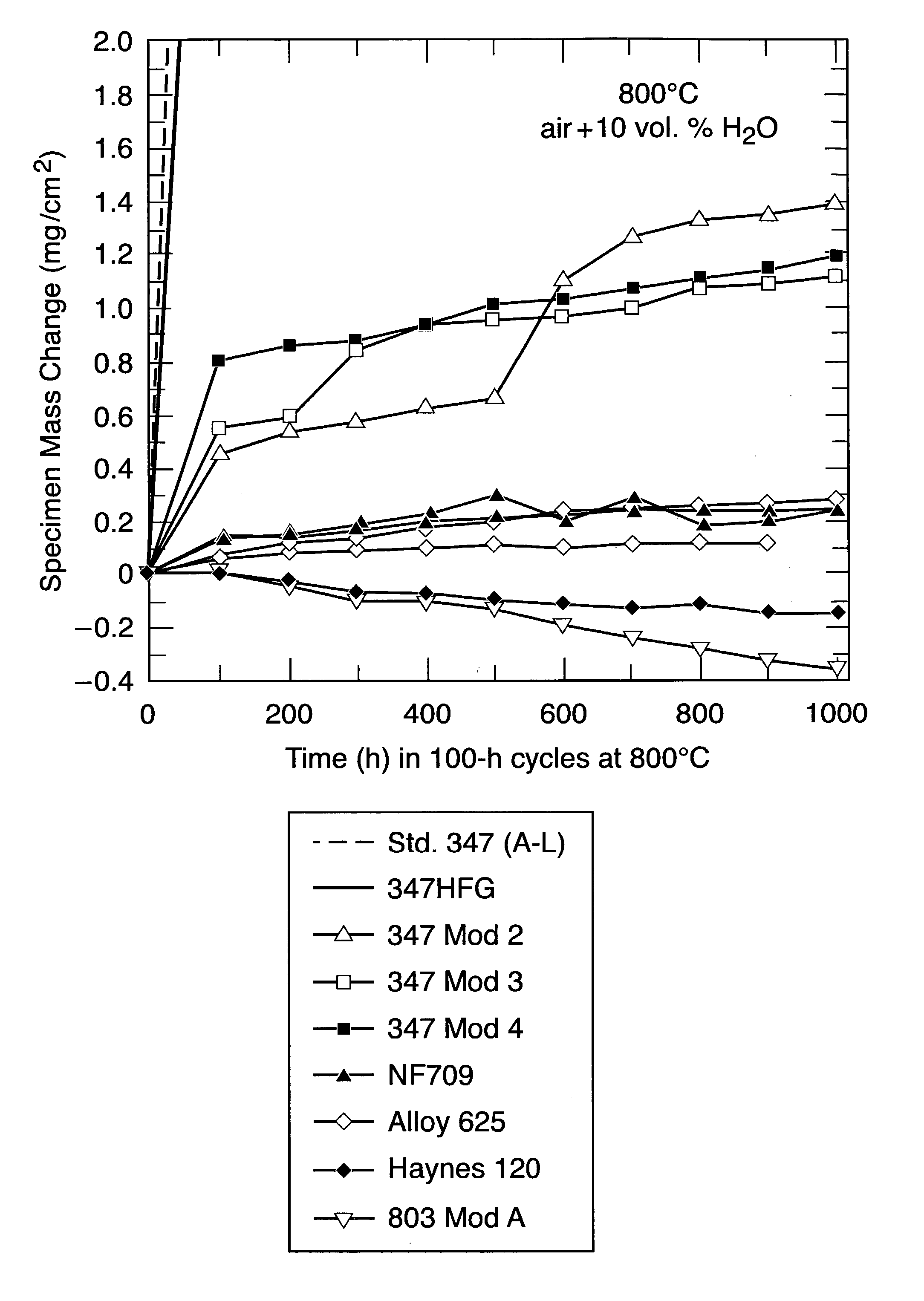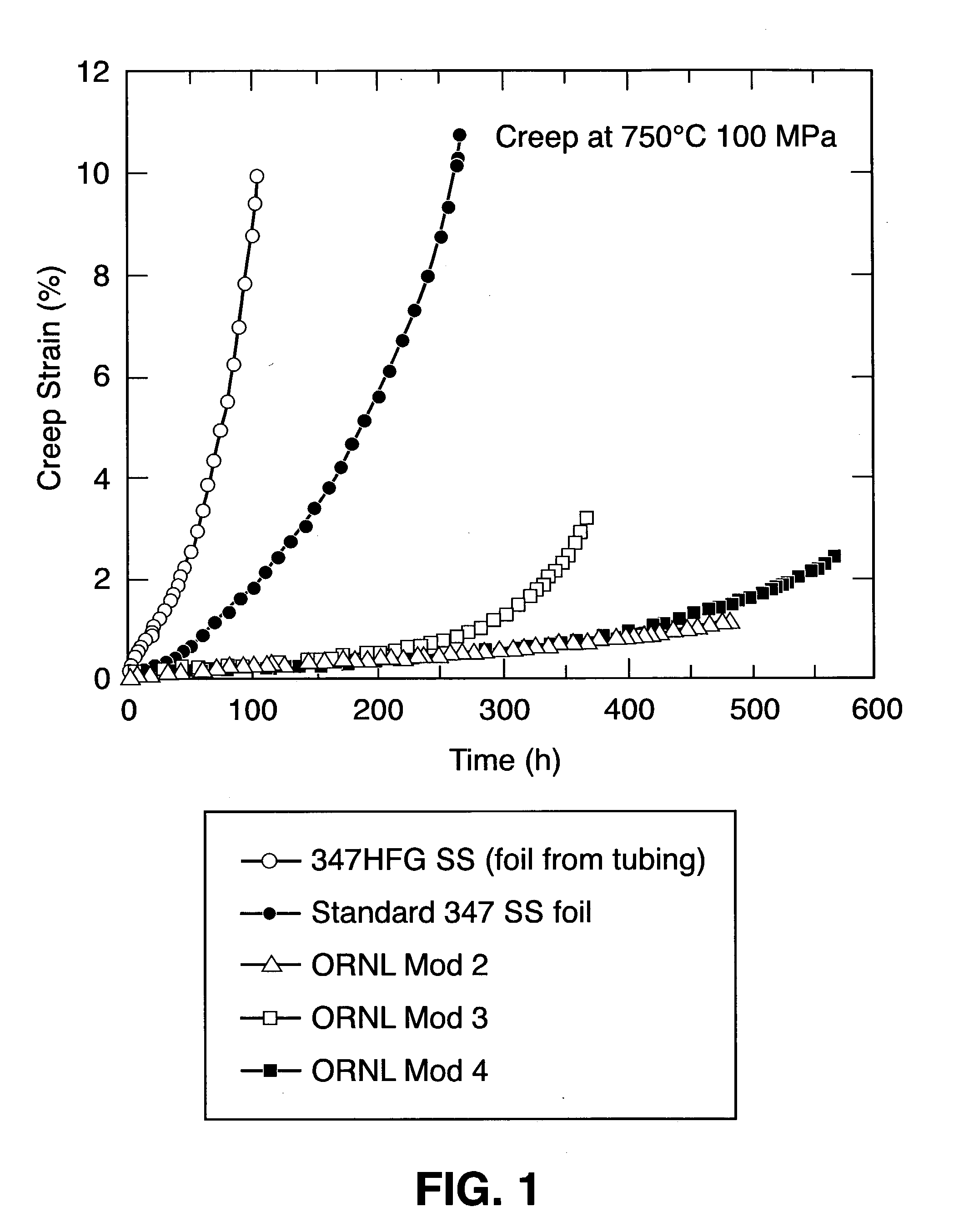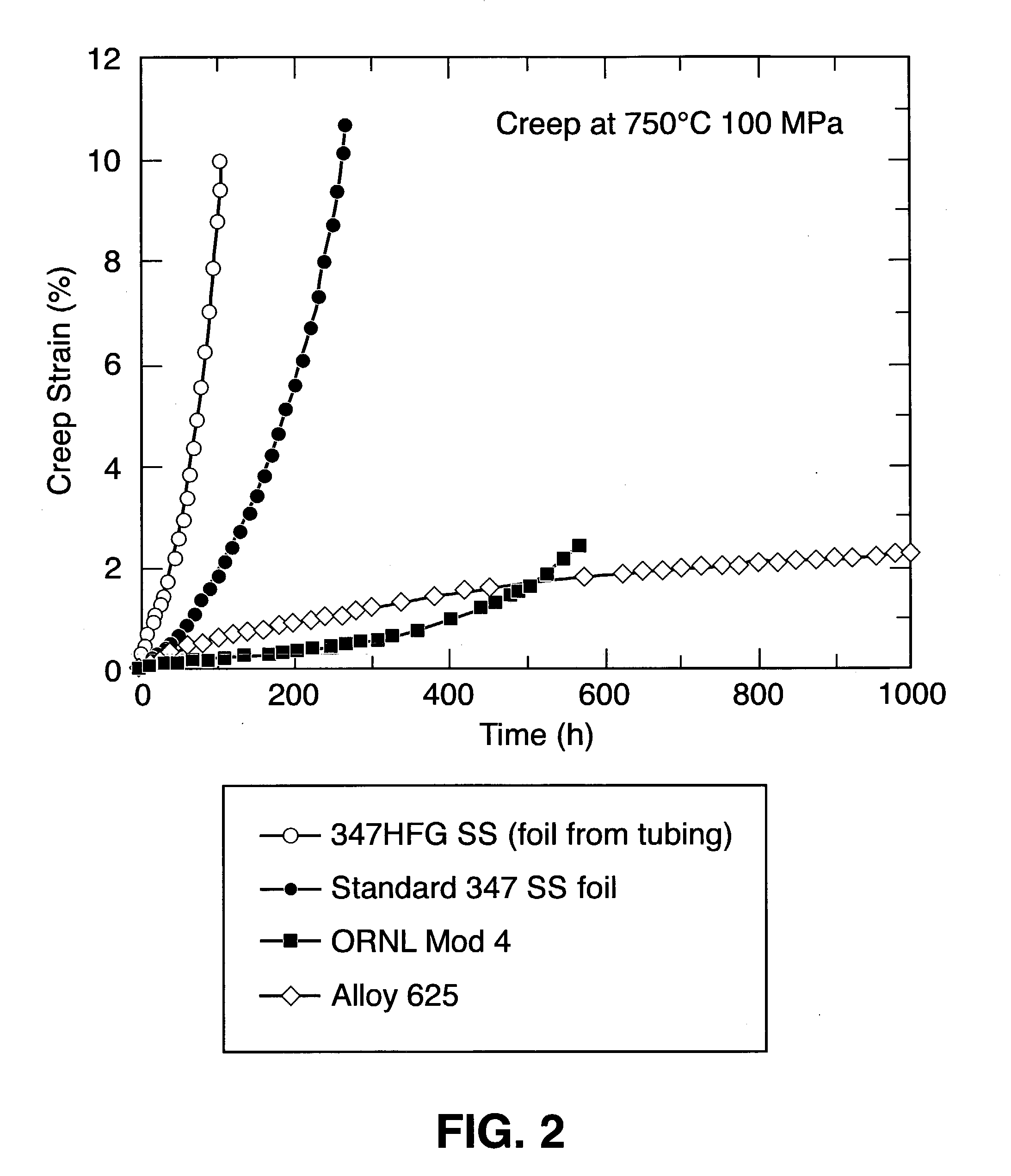Wrought stainless steel compositions having engineered microstructures for improved heat resistance
a technology of microstructure and composition, which is applied in the direction of heat exchange apparatus, lighting and heating apparatus, etc., can solve the problems of lack of creep-rupture resistance and corrosion the lack of aging resistance of stainless steel, so as to increase the long-term stability of fine nbc, stabilize (and strengthen), and enhance high-temperature strength
- Summary
- Abstract
- Description
- Claims
- Application Information
AI Technical Summary
Benefits of technology
Problems solved by technology
Method used
Image
Examples
Embodiment Construction
17781-1 66.7 18.9 11.9 0.3 0.66 -- 0.048 0.011 0.44 0.9 0.01 -- -- -- -- -- -- -- --17782-1 65.7 18.8 12.1 0.3 0.63 -- 0.043 0.12 0.46 1.85 0.01 -- -- -- -- -- -- -- --17783-1R 62.9 18.55 12.1 0.3 0.67 -- 0.058 0.24 0.43 4.73 0.01 -- -- ---- -- -- -- --18113(Mod 1) 61.1 19.2 13.5 0.26 0.38 -- 0.031 0.22 0.36 4.62 0.3 0.01 -- -- -- -- -- -- --18115(Mod 2) 58.3 19.3 12.6 0.25 0.37 -- 0.029 0.25 0.36 4.55 4.0 0.01 0.008 -- -- -- -- -- -- 18237(Mod 3) 57.4 19.2 15.6 0.5 0.19 -- 0.12 0.02 0.39 1.88 4.0 0.01 0.007 0.17 0.47 -- -- -- --18116(Mod 4) 61.1 19.3 12.5 0.25 0.38 -- 0.03 0.14 0.38 1.80 4.0 0.01 0.007 -- -- -- -- -- --18434-1 61.7 18.2 13.2 0.25 0.4 -- 0.089 0.26 0.36 5.03 0.3 0.01 -- -- -- 0.3 ---- --18450 61.8 18.0 13.1 0.25 0.38 -- 0.037 0.26 0.4 5.17 0.3 0.01 -- -- -- 0.28 -- -- --18451 61.5 17.8 13.2 0.25 0.39 0.4 0.04 0.27 0.4 5.13 0.3 0.01 -- -- -- 0.27 -- -- --18528 55.3 14.8 15.3 0.31 0.4 -- 0.11 0.05 0.24 4.98 4.0 4.23 0.008 -- -- 0.3 0.01 0.05 --18529 52.5 20.9 20.2 0.3...
PUM
| Property | Measurement | Unit |
|---|---|---|
| temperature | aaaaa | aaaaa |
| grain size | aaaaa | aaaaa |
| grain size | aaaaa | aaaaa |
Abstract
Description
Claims
Application Information
 Login to View More
Login to View More - R&D
- Intellectual Property
- Life Sciences
- Materials
- Tech Scout
- Unparalleled Data Quality
- Higher Quality Content
- 60% Fewer Hallucinations
Browse by: Latest US Patents, China's latest patents, Technical Efficacy Thesaurus, Application Domain, Technology Topic, Popular Technical Reports.
© 2025 PatSnap. All rights reserved.Legal|Privacy policy|Modern Slavery Act Transparency Statement|Sitemap|About US| Contact US: help@patsnap.com



